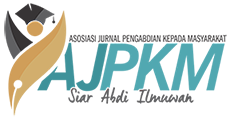Pengelolaan Kota melalui Jejaring Sister City: Kasus Studi dari Indonesia
Abstract
Abstract. Previous research has examined global cities networks by means of the sister city cooperations and the factors which influence its implementation. However, there is no research which examines the extent to which these factors influence the success of sister city cooperation. Therefore, investigating the success factors of the sister city cooperation that contribute to city management is carried out. The case study approach is used by applying in-depth interviews to key informants for subsequent coding and content analysis. We found that the reciprocal relations accurring between the two cities are main factors which spur the sister city cooperation so that it led to the improvement of human resources, helped reduce problems in managing the city environment, and triggered increased market opportunities and global competitiveness. This condition is also supported by consistent local leadership. Meanwhile, shared interests and community participation are needed as a prerequisite for a development process and cooperation relationships that do not directly affect the success of the cooperation.
Abstrak. Penelitian sebelumnya telah banyak memeriksa jejaring kota – kota di dunia melalui kemitraan sister city dan faktor – faktor yang berpengaruh terhadap pelaksanaannya. Namun, belum ada penelitian menyeluruh yang memeriksa sejauh mana faktor – faktor tersebut berpengaruh terhadap kemitraan sister city. Untuk itu, investigasi terhadap faktor - faktor kesuksesan kemitraan sister city yang dapat berkontribusi terhadap pengelolaan kota dilakukan. Pendekatan studi kasus digunakan dengan menerapkan wawancara mendalam terhadap informan kunci untuk selanjutnya dilakukan proses pengkodean dan analisis isi. Kami menemukan bahwa hubungan timbal balik yang terjadi antara kedua kota menjadi faktor utama yang memicu kemitraan sister city sehingga mengarah pada peningkatan sumber daya manusia, membantu mengurangi masalah pengelolaan lingkungan kota, serta memicu peningkatan peluang pasar dan daya saing global. Kondisi tersebut ditunjang juga oleh kepemimpinan lokal yang konsisten. Sementara itu, kepentingan bersama dan partisipasi masyarakat dibutuhkan sebagai prasyarat dari suatu proses pembangunan dan hubungan kemitraan yang tidak berpengaruh langsung terhadap kesuksesan kemitraan.
Keywords
Full Text:
PDFReferences
Bontenbal, M. C. (2009). Strengthening urban governance in the South through city-to-city cooperation: Towards an analytical framework. Habitat International, 33(2), 181–189.
Bontenbal, M., & Van Lindert, P. (2008). Bridging local institutions and civil society in Latin America: can city-to-city cooperation make a difference? Environment and Urbanization, 20(2), 465–481.
De Villiers, J. C. (2009). Success factors and the city-to-city partnership management process–from strategy to alliance capability. Habitat International, 33(2), 149–156.
De Villiers, Jacobus Christiaan. (2011). Strategic alliances between communities, with special reference to the twinning of South African provinces, cities and towns with international partners (PhD Thesis). Stellenbosch: University of Stellenbosch.
Gomes-Casseres, B. (1998). Do you really have an alliance strategy. Strategy & Leadership, 26(4), 6–11.
Hafteck, P. (2003). An introduction to decentralized cooperation: definitions, origins and conceptual mapping. Public Administration and Development: The International Journal of Management Research and Practice, 23(4), 333–345.
Keating, M. (1991). Comparative urban politics: Power and the city in the United States, Canada, Britain, and France. Aldershot, England: E. Elgar.
Kurniawan, T. A., de Oliveira, J. P., Premakumara, D. G., & Nagaishi, M. (2013). City-to-city level cooperation for generating urban co-benefits: the case of technological cooperation in the waste sector between Surabaya (Indonesia) and Kitakyushu (Japan). Journal of cleaner production, 58, 43–50.
LGIB, L. G. I. B. (2001). The links effect: a good practice guide to transnational partnerships and twinning of local authorities. LGIB International report number 3.
O’Toole, K. (2001). Kokusaika and internationalisation: Australian and Japanese sister city type relationships. Australian Journal of International Affairs, 55(3), 403–419.
Roldan, M. D. G. Z. (2018). Local Governments as International Players: Examining Town Twinning as a Mechanism.
Salam, U. (2004). Dinamika Kerjasama Internasional Provinsi di Indonesia dengan Luar Negeri. Makalah. Dipresentasikan pada Lokakarya Cara Penanganan Kerjasama Internasional.
Stimson, R. J., Stough, R., & Salazar, M. (2009). Leadership and institutions in regional endogenous development. Edward Elgar Publishing.
Tjandradewi, B. I., & Marcotullio, P. J. (2009). City-to-city networks: Asian perspectives on key elements and areas for success. Habitat International, 33(2), 165–172.
UNDP. (2000). The challenges of linking. New York: United Nations Development Programme.
Zelinsky, W. (1991). The twinning of the world: sister cities in geographic and historical perspective. Annals of the Association of American Geographers, 81(1), 1–31.
DOI: https://doi.org/10.29313/ethos.v7i2.4526
Refbacks
- There are currently no refbacks.
Alamat Redaksi:
LPPM Unisba, Lantai 2, Jl. Purnawarman 63, Bandung 40116, Jawa Barat, (022) 4203368 , (022) 4264064. ethos.unisba@gmail.com / ethos@unisba.ac.id

This work is licensed under a Creative Commons Attribution-NonCommercial-ShareAlike 4.0 International License.














